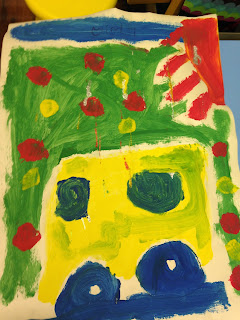How to Prevent Unwanted Behavior and Multiple Time
outs:
1.
Give your child
attention- children repeat behaviors they get attention for, when they behave
badly and get attention for it, the behavior is still being reinforced whether
it is negative or positive attention they receive. Focus on giving positive
attention to good behavior and praising their effort or trying to make good
choices. “you’re working really hard to make good choices” “I am proud of you
for controlling yourself” “You did a great job calming down all by yourself”
2.
Ignore-Ignore
behavior that will not harm them or someone else, bad habits, whining,
tantrums, this lack of attention takes away the very audience they are seeking.
3.
RE-DIRECT
Behavior- If one behavior is a problem, redirect that energy to a positive
action. E.g. Crayon on the wall, give the child paper to draw on, hitting someone,
give them a teddy bear or pillow to hit, Kicking someone, ask them to stomp
their feet in place or do jumping jacks in place, Trouble taking turns, have
them use another toy or be a helper with an adult to use up their need to have
power.
4.
MODEL-Show the
child how to treat others, how to complete the chore requesting, or how to
behave appropriately. Children are sponges and learn how to act and react from
their parent’s actions and reactions. Be patient with your child and help them
practice wanted behaviors. *remember they are always watching you and how you
are is how they think they can be.
5.
Fines-Some
families access fines for bad behavior or habits, rules violated, or forgotten
responsibilities. My kids pay me a quarter every time they say a potty word.
6.
Grandma’s Rule-
WHEN…..THEN. When you eat your dinner, then you can have dessert. Providing the
child with options and returning the responsibility of the task to them.
“When you choose to pick up the toys,
then you choose to watch tv”, “when you choose to clean up your room, you
choose to have a friend over” Remember you need to tie what you want with what
they want to make this work.
7.
Re-Arrange Space
or place- Be creative to eliminate conflict. Clothes and toys a mess, have a
baskets or low hooks for easier pick up, set out clothes for school the next
day the night before to eliminate conflict in the morning, for chores forgotten
have a chart to remind child what their responsibilities are.
8.
Logical
Consequences- Let the action do the “talking”, you write on the wall, you wash
it off; you spill your milk, you clean it up; you talk back, you loose phone
time; you dump toys out on the floor, you pick up each toy and put it back in
the bucket. Older kids, ask them to create a logical consequence, often their
consequence is much more harsh than what you would have chosen for them and
they will follow thru with the consequence if they were involved in the
decision process.
9.
Time outs- use
time out for dangerous harmful to self or others behaviors-biting, kicking,
spitting, purposeful destruction, defiant disobedience. Time outs are not
punishment, they are a time to reflect on the behavior and the child and parent
to calm down, it is not to be forced or pushed into, it is a break from the
unwanted behavior and should be a calming time for the child to relax and take
a deep breath. The processing after the time out is the most important, talking
to not lecturing the child about the choices she made and the things she can do
next time to make a different choice e.g. next time I can punch and squeeze
play dough instead of hitting daddy, or stomp my feet instead of kicking the
dog. Then apologize, not just “I’m sorry” but instead “Do you forgive me for
hitting you? I am sorry” Hug it out and tell the child how proud you are they
took a break to calm down and how special they are. This helps them learn how
to cope.
10.EMPATHY COACHING- Teaching empathy to
our kids is one of the most important lessons. Modeling empathy is the best way
to ensure your child learns how to care for others thoughts, experiences,
perceptions and feelings. E.G. “When you hit mom, my feelings were very hurt
and I felt sad”. Or ask the child, “When you hit your brother, how do you think
he felt?” Provide empathic statements and reflections to others feelings, so
that you are teaching active listening and empathy, “your feeling sad, that
must be uncomfortable”, “You had a big fall, that looked like it hurt and now
you feel upset” “You’re tired” “You seem frustrated trying that over and over”
“You’re mad, that just doesn’t seem fair to you”
Also, learn how to verbalize conflict
resolution when you are processing it (an argument with a friend) and/or others
are walking through the steps. Talk through taking the other party’s
perspective and asking the child to brainstorm the solutions out loud to
resolve the issue. Empathy is lacking in
interpersonal relationships in our society and children are more selfish, self -absorbed
and dependent on their own abilities. We need to help children put themselves
in other shoes to value and appreciate what they have and the special qualities
that make them unique.
Lastly,
I love to
focus on positive behavior rather than negative because when I focus on
positive I feel happier about parenting. In our house we use a bubble gum jar
to promote happy choices and positive outcomes. When the buble gum jar is
filled the kids get to choose one prize from my treasure box. They are very
motivated to fill the jars and to get to choose a prize because they pick out
the prizes e.g. I heart Yogurt, Movies, Restaurant of your Choice, etc. Playful blessings, Brooke



Comments
Post a Comment